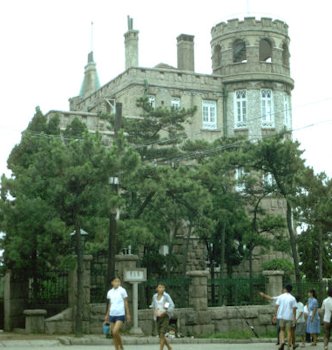
|
Our Trip to Qingdao, Shandong
8. German Architecture The story of how German style of buildings came to be in Qingdao begins in 1729. The British opium trade in 1729 amounted to 200 chests (about 150 pounds per chest) and grew to 23,570 chests by 1832 and 40,000 by 1838. After 1800, the Chinese banned the sale and use of opium but ship captains found it easy anchoring off shore and selling the entire cargo. In 1838, the Qing finally put their foot down. Lin Zexu went to Canton to end the trade of opium. By 1839, he had arrested 1,600 Chinese, seized 50,000 pounds of opium and 60,000 opium pipes. Lin then confiscated 20,000 chests of opium from the British and arrested some British seaman. The British countered with 16 warships carrying 540 guns, 4 newly designed armed steamers, 28 transports, and 4000 troops. After numerous battles, skirmishes and blockades later the Chinese settled the matter. In 1841 they gave Britain Hong Kong, $6,000,000 in indemnities and direct contacts with the Qing state. The British were furious that they had not gotten more, and began the fight anew. Capturing some Chinese cities, blockading others, they began an attack on Nanjing. The Qing quickly signed the Treaty of Nanjing. The treaty contained twelve main articles. Among them, it opened five Chinese cities including Shanghai to residence by British subjects and opening of consulates. China ceded Hong Kong to Britain in "perpetuity" to be ruled as they "shall see fit." The British received $21 million for payment of lost opium, and cost of the war. Hi-Res Pic (156K) ⇦ Back to Page 7 Back to Qingdao Trip Page 1 On to Page 9 ⇨ |